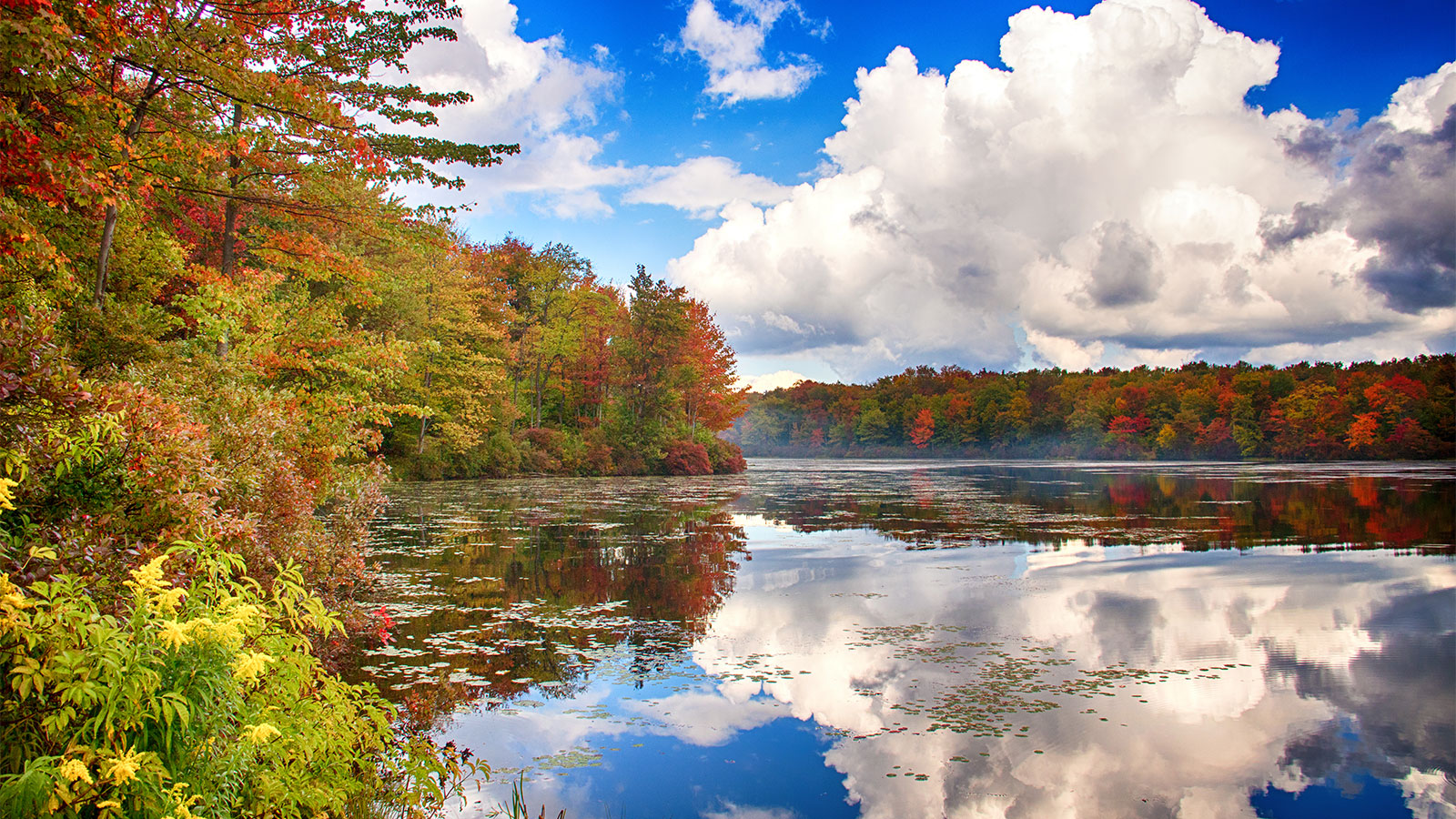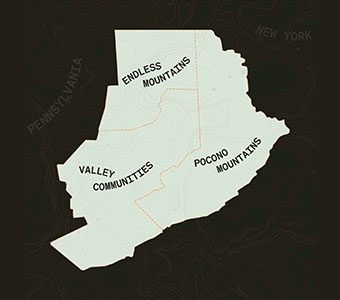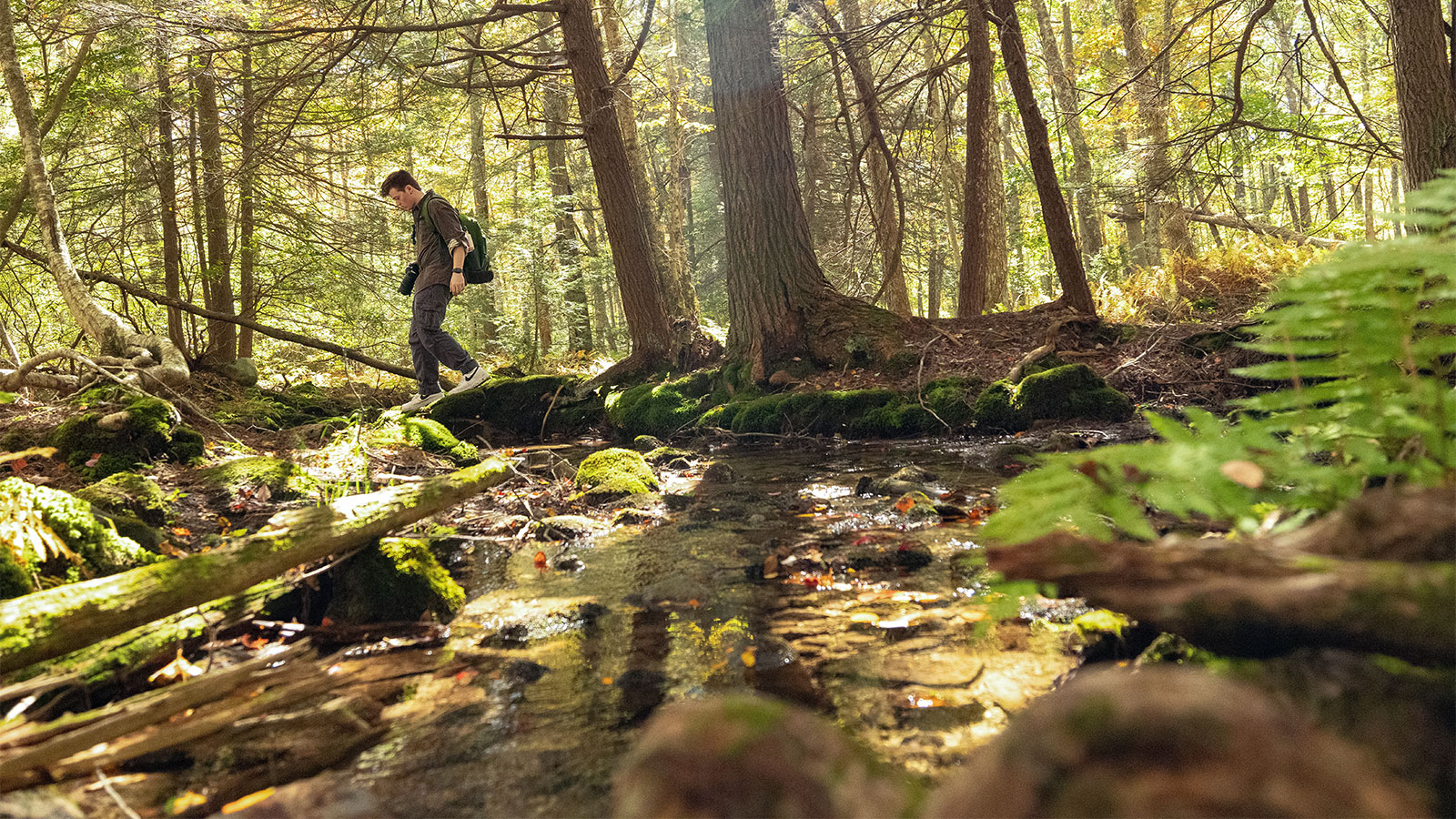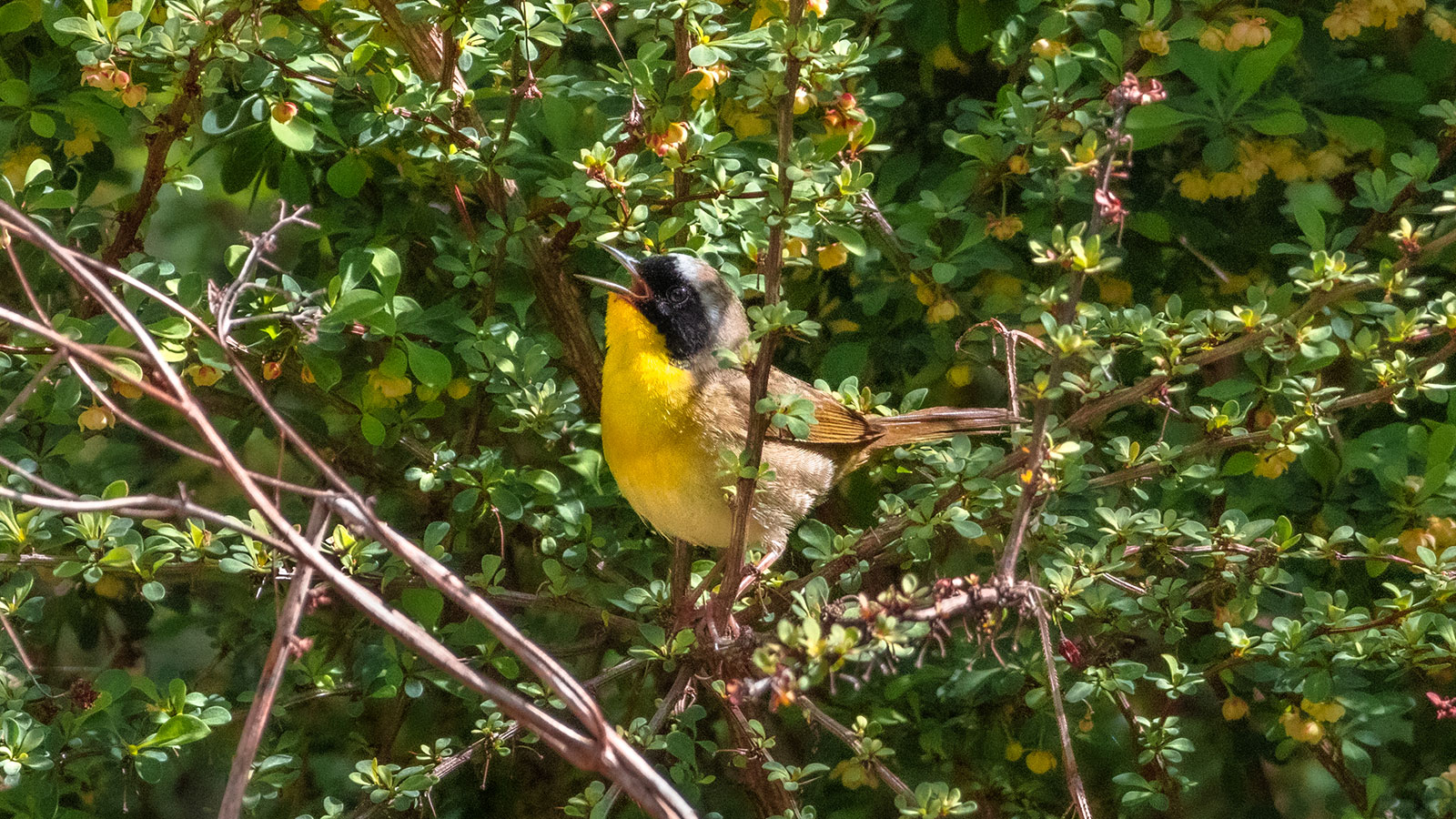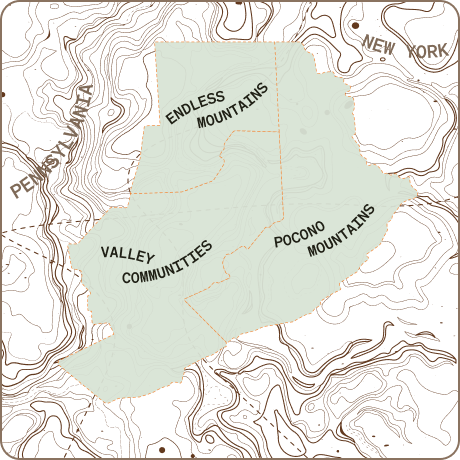DiscoverNEPA is partnering with North Branch Land Trust, a nonprofit that conserves the natural, working and scenic landscapes of NEPA. They’ll provide conservation tips and give us a look at their protected lands. Learn how you can join NBLT and do your part to protect NEPA’s natural resources.
Looking for Wildlife in NEPA’s Winter Wilderness

Nature always finds a way.
When the cold nights and frosty mornings descend on Northeastern Pennsylvania, it is easy to find stillness in nature. Though migrant birds have long abandoned the barren branches and wetlands and waterways may soon freeze, do not mistake that stillness for emptiness! Life is surprisingly abundant in NEPA winters—as long as you know how to look.
Although it is still “technically” fall in NEPA, snow has already graced many of our yards, and outdoor enthusiasts will be packing away their kayaks for a set of skis. When taking advantage of our area’s gorgeous natural trails this winter, be sure to keep an eye out for the ways nature adapts this season!
While seasonal species may be gone, bird watchers braving the cold see winter benefits. Deciduous trees like oaks and maples have shed their leaves, making spotting easy. Year-round species like cardinals, chickadees, and juncos become emboldened in their search of dwindling food sources and venture closer to human activity.

There’s always something going on in nature, even when it seems like there’s not.
Terrestrial birds and small mammals, like bobwhite quails and chipmunks, attempting to escape watchful predators take cover in the remains of tall grasses and shrubs. In the evening, snowy fields are hunting grounds for owls, foxes, and other predators. Remaining on marked trails, especially when using motorized vehicles, can help to ensure that these winter habitats can thrive in balance.
Like our forests, our wintertime waterways and wetlands continue to pulse with life just beyond the surface. Except for shallow still bodies of water, it is rare for these habitats to freeze completely. Before ice freezes across the surface, plants, animals, and insects prepare for colder, darker, less oxygenated water. While annual herbaceous plants leave seeds behind, some wetland specialists like bladderwort return to a bud-like state and sink to the warmer mud below.
Many invertebrates, reptiles, and amphibians have the same idea—they search for earth below the frostline that will keep them warm and hydrated while they hibernate. Earthworms, slugs, and other “slimies” cocoon themselves in mucous deep in the soil that prevents them from freezing solid! Frogs and turtles, iconic wetland wildlife, also take to the mud or soil below the frostline to wait out the snow. Each creature adapts to their time in hibernation differently, but the ultimate goal is to slow body functions long enough to make it to spring.

Remember to minimize your impact on NEPA’s wildlife and natural spaces.
However, not everyone in our wetlands and waterways tuck away until the warmer months. Snowfall makes it easier to see evidence of fishers and beavers, whose warm coats allow them to navigate the colder months more consciously. Fish can still thrive beneath thick sheets of ice, well known by wintertime anglers.
As you plan your winter recreation, remember NEPA’s natural wonders. Explore motorized fun that is mindful of natural habitats. Consider a chilly hike or snowshoe adventure to witness the life thriving around us. Leave each trail cleaner than you found it. And know that many of these lands are protected in perpetuity, so that generations to come can enjoy the same beautiful NEPA winters that we do!
NBLT owns several nature preserves that are open to the public. Visit these local preserves for excellent hiking trails, wildlife watching and more.
Featured Image (Top) Courtesy of Mike Gondell, Friends of Picton.







